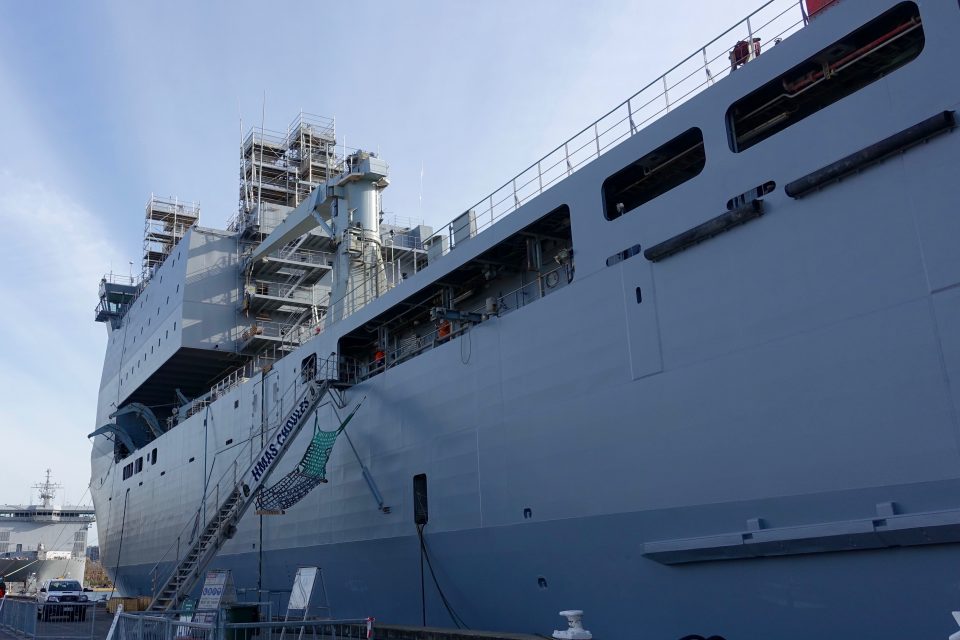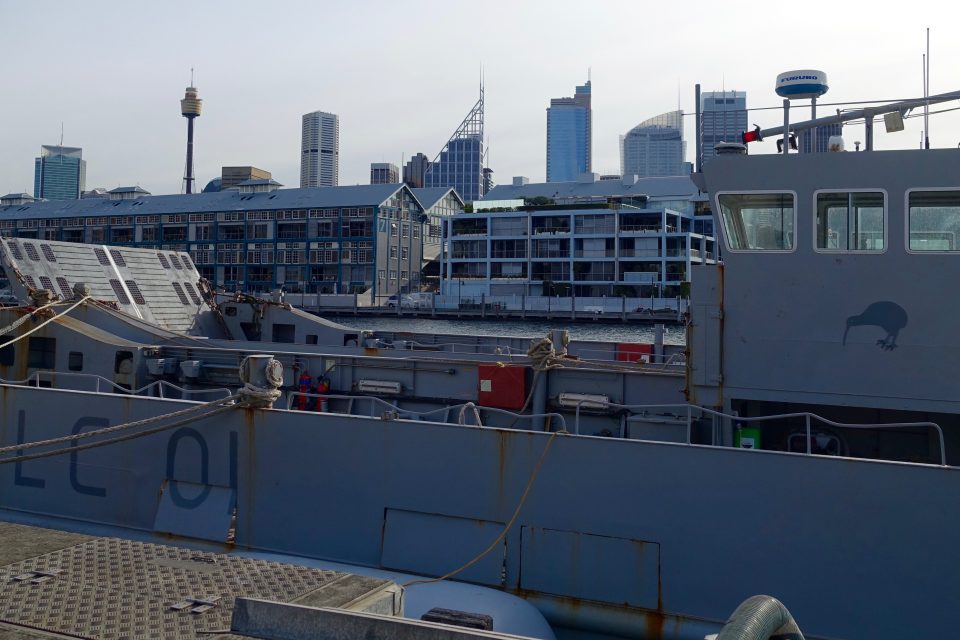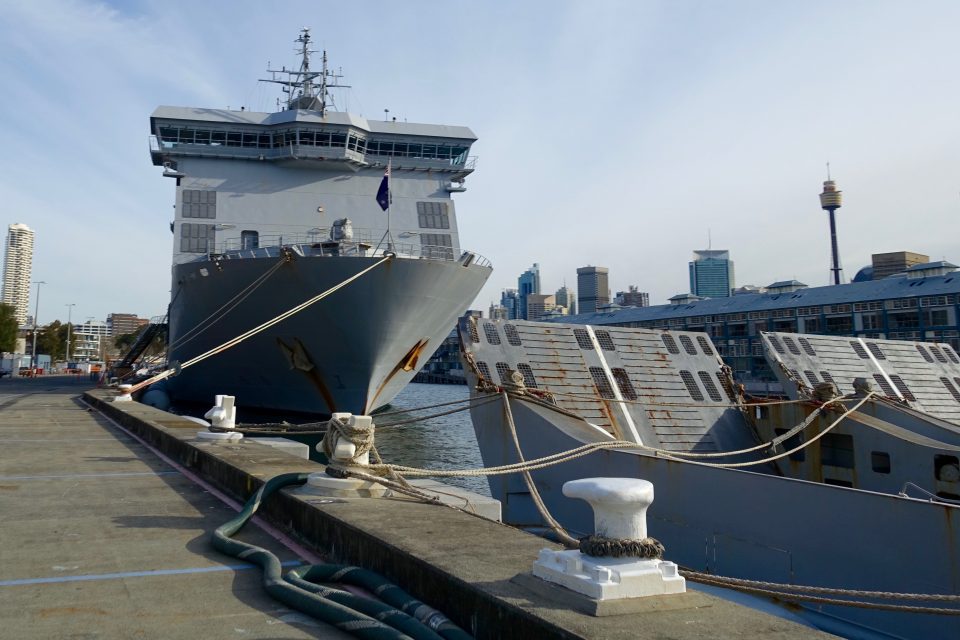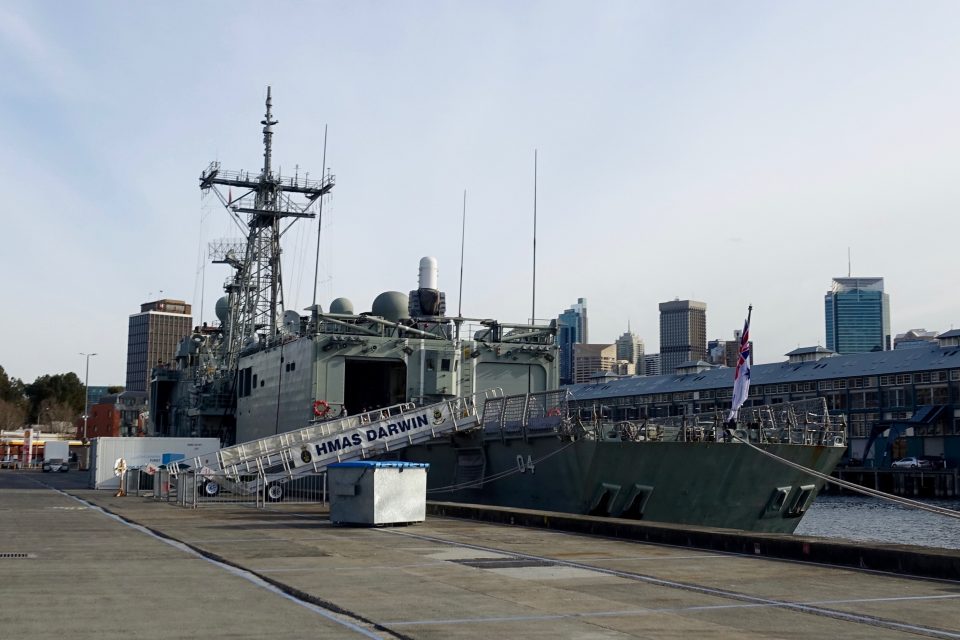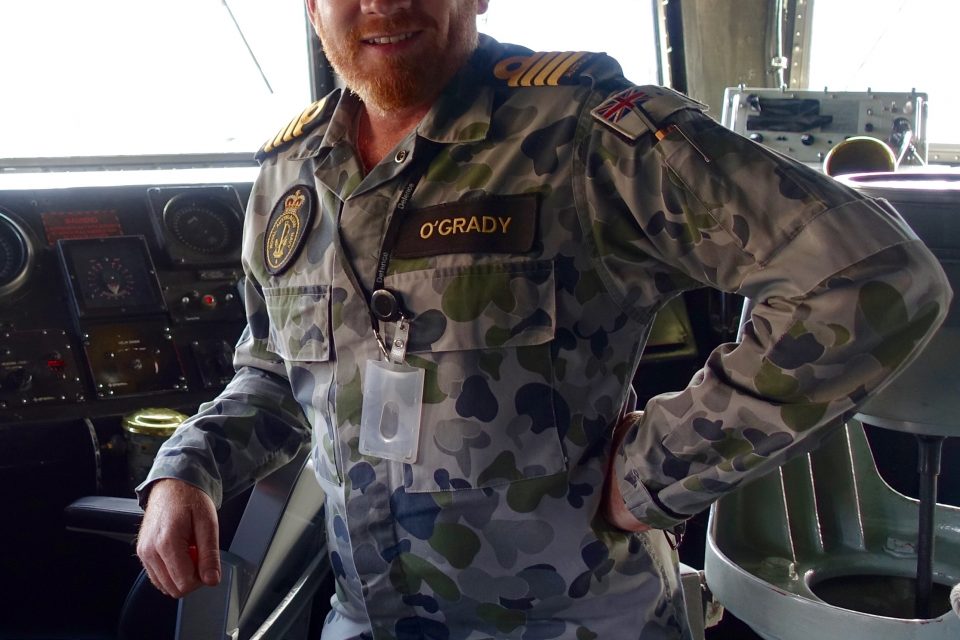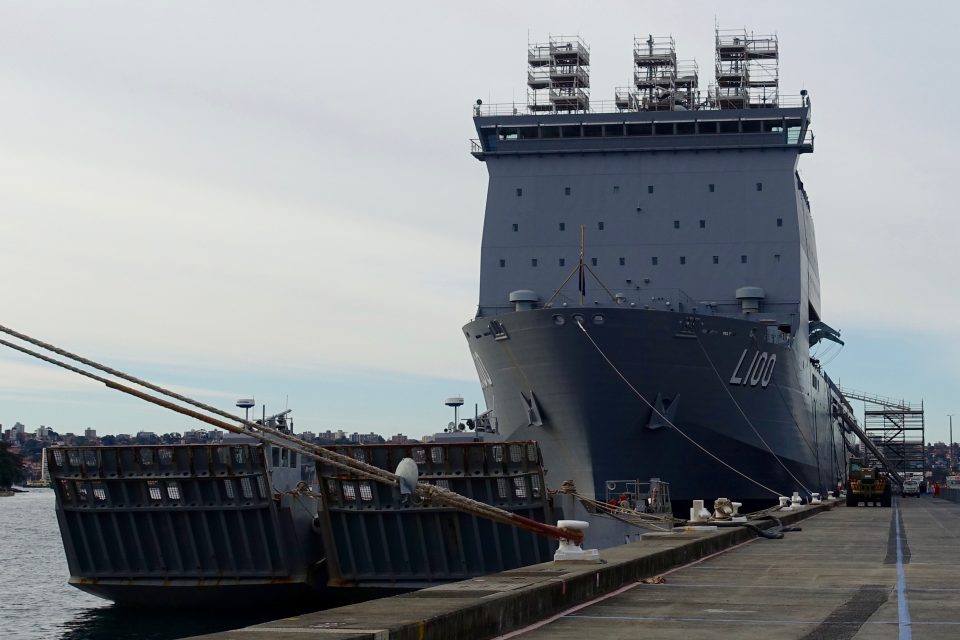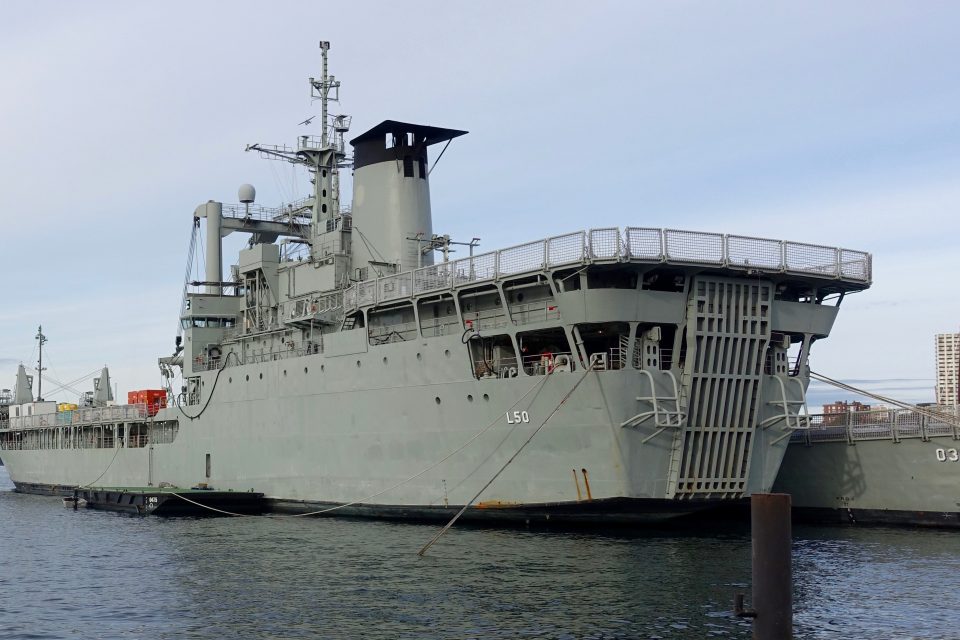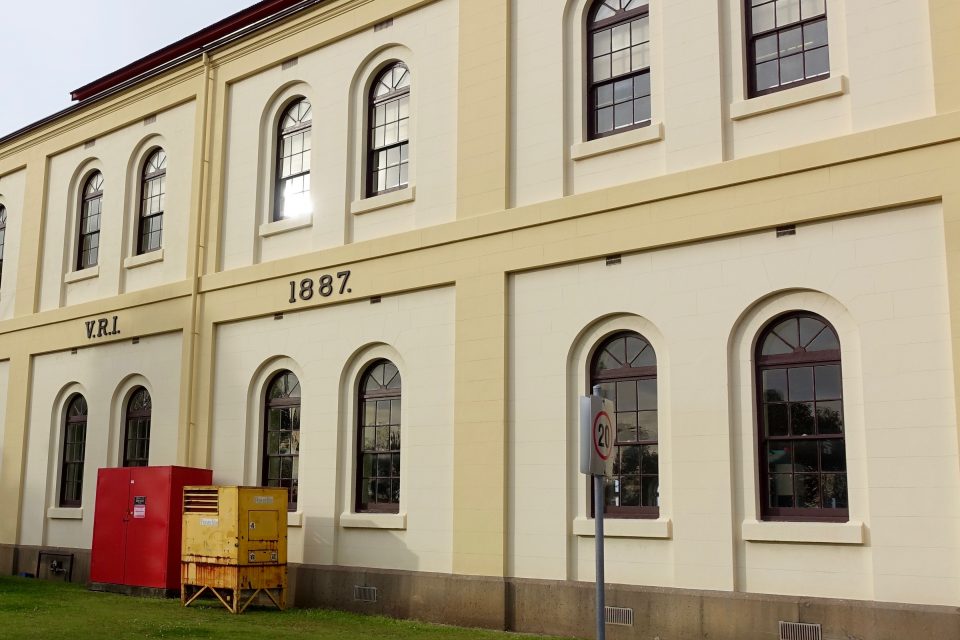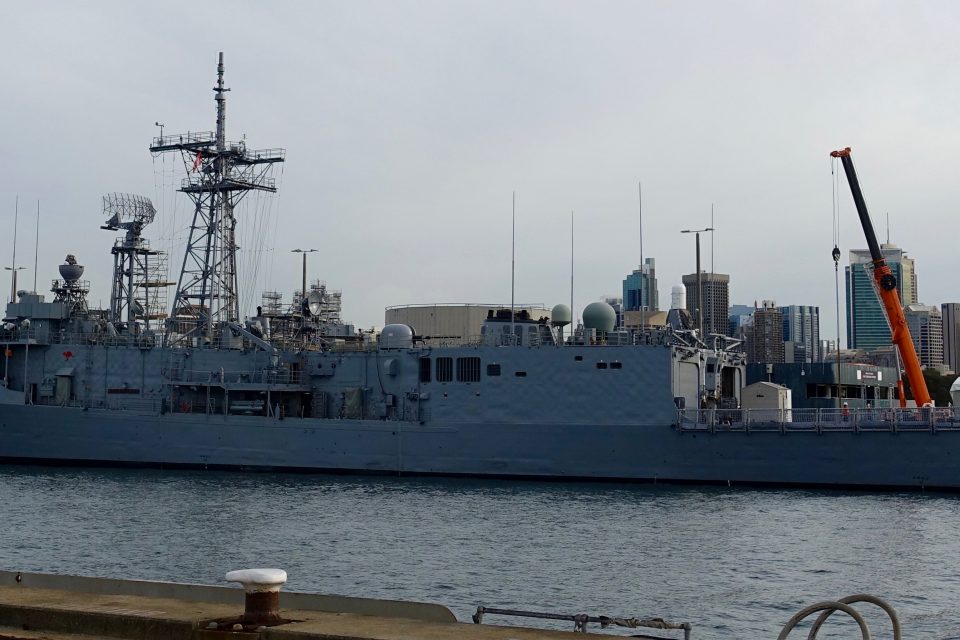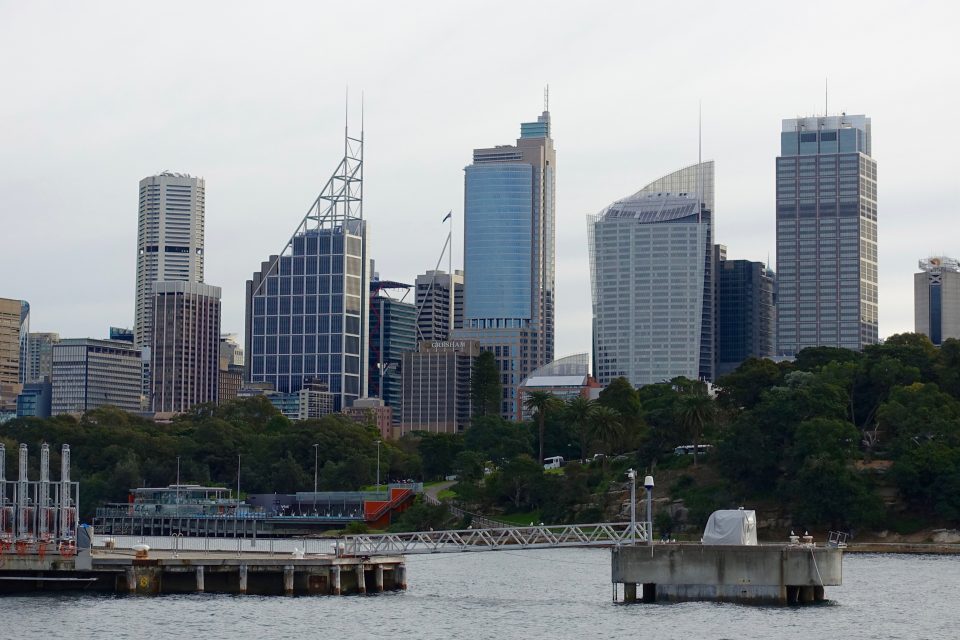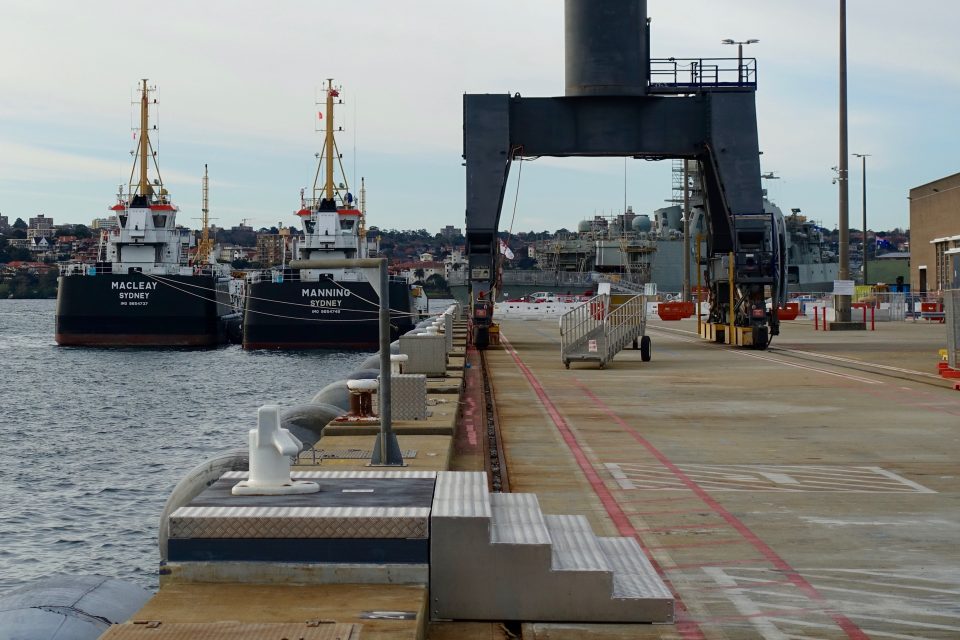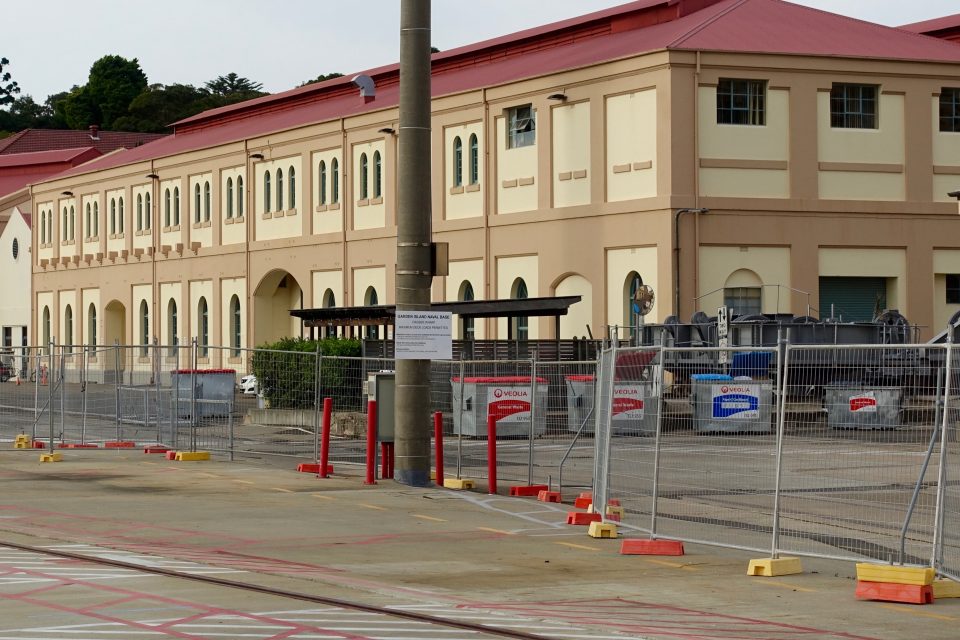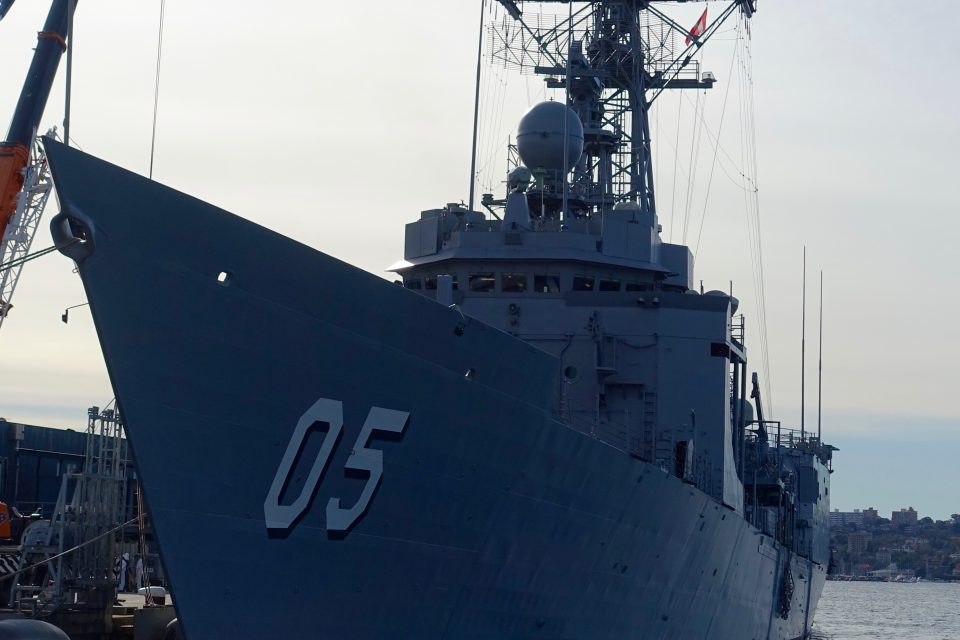2016-09-19 By Robbin Laird
On the Friday after the Williams seminar on air-sea integration, I had the chance to tour the headquarters of the Australian Navy’s Fleet Base East on Garden Island, Sydney.
Garden Island is the largest historic naval area on Sydney Harbour, with use going back to the founding of the colony in 1788.
Greatly expanded during World War II, it now comprises major dockyard facilities run by a civilian operator, the naval wharves used by major fleet units of the RAN, various training facilities under the control of HMAS Kuttabul and a heritage precinct, open to the public, that includes the official museum of the Royal Australian Navy.
https://en.wikipedia.org/wiki/Fleet_Base_East
Modern Australia was created as an outreach of the Royal Navy and Garden Island has the first graffiti from the British, namely, the name markings of sailors on the first fleet which arrived in Australia in 1788.
The First Fleet is the name given to the 11 ships that left Great Britain on 13 May 1787 to found the penal colony that became the first European settlement in Australia.
The Fleet consisted of two Royal Navy vessels, three store ships and six convict transports, carrying more than 1,000 convicts, marines and seamen, and a vast quantity of stores.
From England, the Fleet sailed southwest to Rio de Janeiro, then east to Cape Town and via the Great Southern Ocean to Botany Bay, arriving in mid-January 1788, taking 250 to 252 days from departure to final arrival.
https://en.wikipedia.org/wiki/First_Fleet
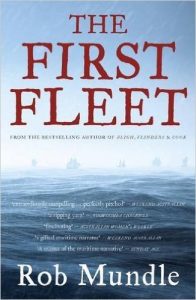
When touring the base, several buildings which served the Royal Navy in the 19TH century can be found which are now used by the Australian Navy.
My interlocutor and guide during my visit was Captain Paul O’Grady, Deputy Commander of the Surface Force.
We toured the base and afterword’s sat down in Rear Admiral Mayer’s office to conduct an interview.
We discussed many issues, but one key issue is the challenge of shaping an infrastructure for a 21st century fleet.
Chief of Navy, Vice Admiral Tim Barrett, and Commander of the Fleet, Rear Admiral Mayer, discussed at the seminar and in interviews with me, the evolution of the fleet and the challenges of shaping 21st century capabilities.
But what is often overlooked is the salience of infrastructure in building, operating and shaping that fleet.
Vice Admiral Barret discussed the one ship concept and the need to integrate the build, with the maintenance, with the modernization and with the operations of the fleet.
He was seeking a naval equivalent to what the RAAF is doing with Wedgetail in Williamtown where the squadron is co-located with the systems program office which is tasked with the software upgrades of the aircraft.
Earlier this year, at the Air Power Conference, the Australian Minister of Defence highlighted the crucial importance of building the infrastructure which could support a modernized Australian defense force.
It is of course not just improved ICT networks and systems and capability that will underpin our future Air Force over the next two decades.
One of the defining features of the 2016 Defence White Paper and Integrated Investment Program is the renewed focus on enabling capabilities.
In fact, 25 per cent of the Integrated Investment Program is allocated to the enabling projects, which help to bind our capabilities – whether it’s our airfields, our bases, our wharves, our ordnance facilities or our logistics systems, just to name several.
As Captain O’Grady underscored: “We have ships with increasingly greater demands for power such as the Aegis ships.
And of course the requirements from an environmental perspective are quite different now to what they were when some of these facilities were originally built.
There’s been a dramatic shift from the facilities which worked in the 1970s and 1980s to what we need now, particularly, operating in an urban environment like Sydney as well.”
During the visit, Captain O’Grady pointed out the new infrastructure being built to support the new LHD ships and the coming Air Warfare destroyers to support Fleet Base East.
To decongest the area, most of the support facilities such are collocated on Garden Island but some are located nearby in the area, such as training facilities.
He emphasized the significance of the shift back from more individual operation of platforms to a 21st century task force concept in which ships deployed from Australia would marry up with other air and naval assets in areas of interest.
This meant as well ensuring commonality of logistical support across the fleet to ensure proper force generation to ensure the performance of the given task force up against the tasks given to that task force.
He highlighted the importance of shaping what he called “a logistical node system” to support the distributed fleet.
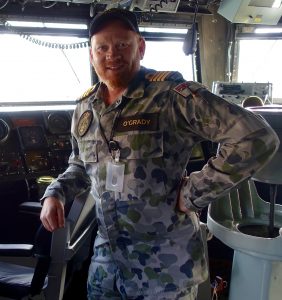
It was important to be able to support the fleet from a diversity of support points to support a distributed task force.
“How we support a task group requires a different set of support networks than supporting individual ships.
“We have to think about the broader task force and its wider support requirements on operations.”
During a visit of the modified Perry class Frigate at the base, the Captain highlighted the advantages of being able to leverage a global fleet of ships. Operating the Perry class has meant that the Australian Navy has been able to support it ships on operations by leveraging the global logistiocs supporting a fleet of such ships.
They have also modified the ship with new technology which allows it to have new weapons and C2 capabilities appropriate to evolving missions.
This example highlighted the importance of building ships which are capable of regular upgrades of software or weapons.
Also on base is a significant dry dock for ship repair, originally built to support Allied large deck naval carriers and battleships when built in 1945.
It is still in use and the cost of the facility is amortized in part by making it available for commercial purposes as well.
In short, the leadership of the Royal Australian Navy is working the infrastructure side of the evolving fleet hard.
But the challenge is a significant one and will require resources, and vision in shaping an appropriate infrastructure for the new classes of ships and the evolving concepts of operations.
Editor’s Note: The following note from Wikepedia provides an overview on the RAN ship inventory and locations:
The Royal Australian Navy (RAN) fleet is made up of 47 commissioned warships as of January 2016.
The main strength is the eleven frigates of the surface combatant force: eight Anzac class and three Adelaide class. Six Collins-class boats make up the submarine service, although due to the maintenance cycle not all submarines are active at any time.
Amphibious warfare assets include two Canberra-class landing helicopter dock ships and the landing ship HMAS Choules.
Thirteen Armidale-class patrol boats perform coastal and economic exclusion zone patrols, and four Huon-class vessels are used for minehunting and clearance (another two are commissioned but in reserve since October 2011).
Replenishment at sea is provided by two ships, Sirius and Success, while the two Leeuwin-class and four Paluma-class vessels perform survey and charting duties.
In addition to the commissioned warships, the RAN operates the sail training ship Young Endeavour and two Cape-class patrol boats acquired from the Australian Border Force. Other auxiliaries and small craft are not operated by the RAN, but by DMS Maritime, who are contracted to provide support services.
The lion’s share of the RAN fleet is divided between Fleet Base East (HMAS Kuttabul, in Sydney) and Fleet Base West (HMAS Stirling, near Perth).
Mine warfare assets are located at HMAS Waterhen (also in Sydney), while HMAS Cairns in Cairns and HMAS Coonawarra in Darwin host the navy’s patrol and survey vessels.
https://en.wikipedia.org/wiki/List_of_active_Royal_Australian_Navy_ships
The slideshow above highlights scenes from the day of the visit, including views of two ships out of commission, including HMAS Tobruk, L-50.
A New Zealand ship is seen as well.
The location of the fleet within the harbors is highlighted throughout.
The final photos show the 19th century buildings and the shot of the area which is a key area for upgrade is seen prior to the views of the 19th century buildings.
The next week, I visited the Maritime Museum in Sydney which is really an excellent experience to get a perspective on the role of maritime activities in the shaping of modern Australia.
Seen below is a shot of HMAS Onslow, a submarine of the Oberon-class submarines, the predecessor to the current Collins Class.
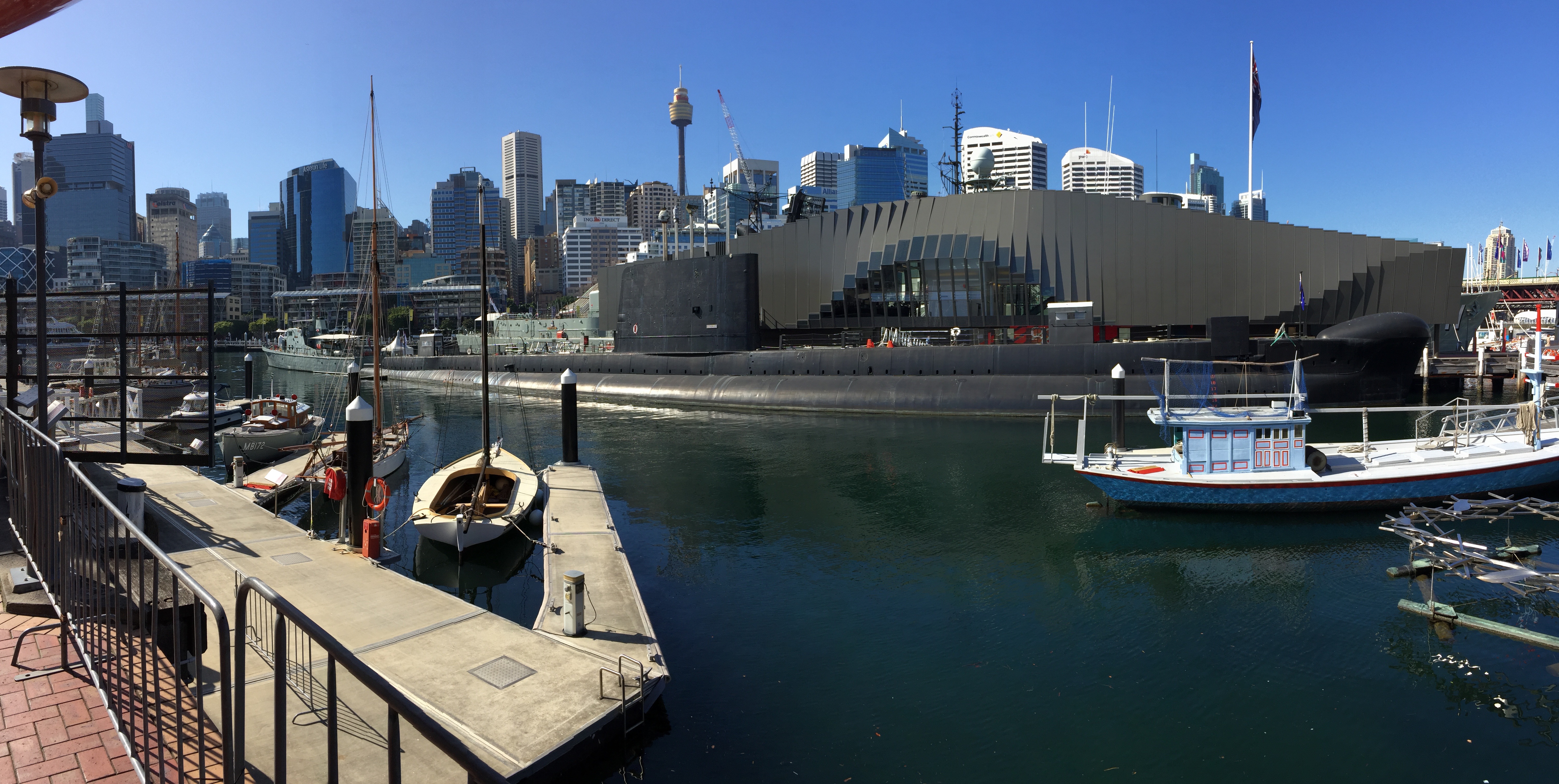
When I visited the HMAS Onslow that day, onboard was a retired Naval officer who had spent nearly 30 years onboard Australian submarines and he clearly was the guardian of the flame for the silent service, but was not so silent in articulating why he thought the Onslow was a wonderful vessel!
There he sat — in retirement — clearly ready to go to sea again with his submarine!
https://en.wikipedia.org/wiki/HMAS_Onslow



